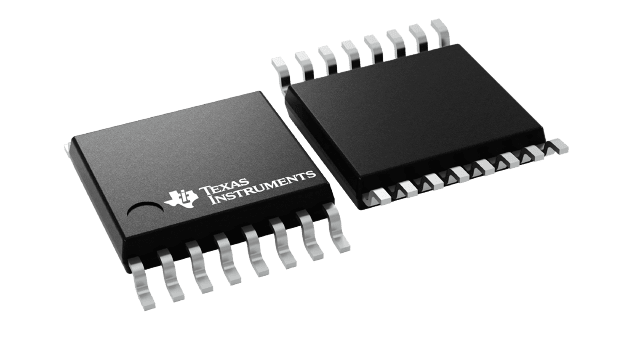| Resolution (Bits) | 10 |
| Number of input channels | 4 |
| Sample rate (Max) (kSPS) | 85 |
| Interface type | SPI |
| Architecture | SAR |
| Input type | Single-Ended |
| Multi-channel configuration | Multiplexed |
| Rating | Catalog |
| Reference mode | Ext |
| Input range (Max) (V) | 5.5 |
| Input range (Min) (V) | 0 |
| Operating temperature range (C) | -40 to 85 |
| Power consumption (Typ) (mW) | 1.75 |
| Analog voltage AVDD (Min) (V) | 2.7 |
| Analog voltage AVDD (Max) (V) | 5.5 |
| INL (Max) (+/-LSB) | 1 |
| Digital supply (Min) (V) | 2.7 |
| Digital supply (Max) (V) | 5.5 |
- Conversion Time <= 10 us
- 10-Bit-Resolution ADC
- Programmable Power-Down
Mode...1 uA - Wide Range Single-Supply Operation of
2.7 V dc to 5.5 V dc - Analog Input Range of 0 V to VCC
- Built-in Analog Multiplexer with 8 Analog Input Channels
- TMS320 DSP and Microprocessor SPI and QSPI Compatible Serial Interfaces
- End-of-Conversion (EOC) Flag
- Inherent Sample-and-Hold Function
- Built-In Self-Test Modes
- Programmable Power and Conversion Rate
- Asynchronous Start of Conversion for Extended Sampling
- Hardware I/O Clock Phase Adjust Input
The TLV1544 and TLV1548 are CMOS 10-bit switched-capacitor successive-approximation (SAR) analog-to-digital (A/D) converters. Each device has a chip select (CS\), input-output clock (I/O CLK), data input (DATA IN) and serial data output (DATA OUT) that provide a direct 4-wire synchronous serial peripheral interface (SPITM, QSPITM) port of a host microprocessor. When interfacing with a TMS320 DSP, an additional frame sync signal (FS) indicates the start of a serial data frame. The devices allow high-speed data transfers from the host. The (INV CLK)\ input provides further timing flexibility for the serial interface.
In addition to a high-speed converter and versatile control capability, the device has an on-chip 11-channel multiplexer that can select any one of eight analog inputs or any one of three internal self-test voltages. The sample-and-hold function is automatic except for the extended sampling cycle, where the sampling cycle is started by the falling edge of asynchronous CSTART\. At the end of the A/D conversion, the end-of-conversion (EOC) output goes high to indicate that the conversion is complete. The TLV1544 and TLV1548 are designed to operate with a wide range of supply voltages with very low power consumption. The power saving feature is further enhanced with a software-programmed power-down mode and conversion rate. The converter incorporated in the device features differential high-impedance reference inputs that facilitate ratiometric conversion, scaling, and isolation of analog circuitry from logic and supply noise. A switched-capacitor design allows low-error conversion over the full operating temperature range.
The TLV1544 has four analog input channels while the TLV1548 has eight analog input channels. The TLV1544C and TLV1548C are characterized for operation from 0°C to 70°C. The TLV1544I and TLV1548I are characterized for operation over the full industrial temperature range of -40°C to 85°C. The TLV1548M is characterized for operation over the full military temperature range of -55°C to 125°C.








